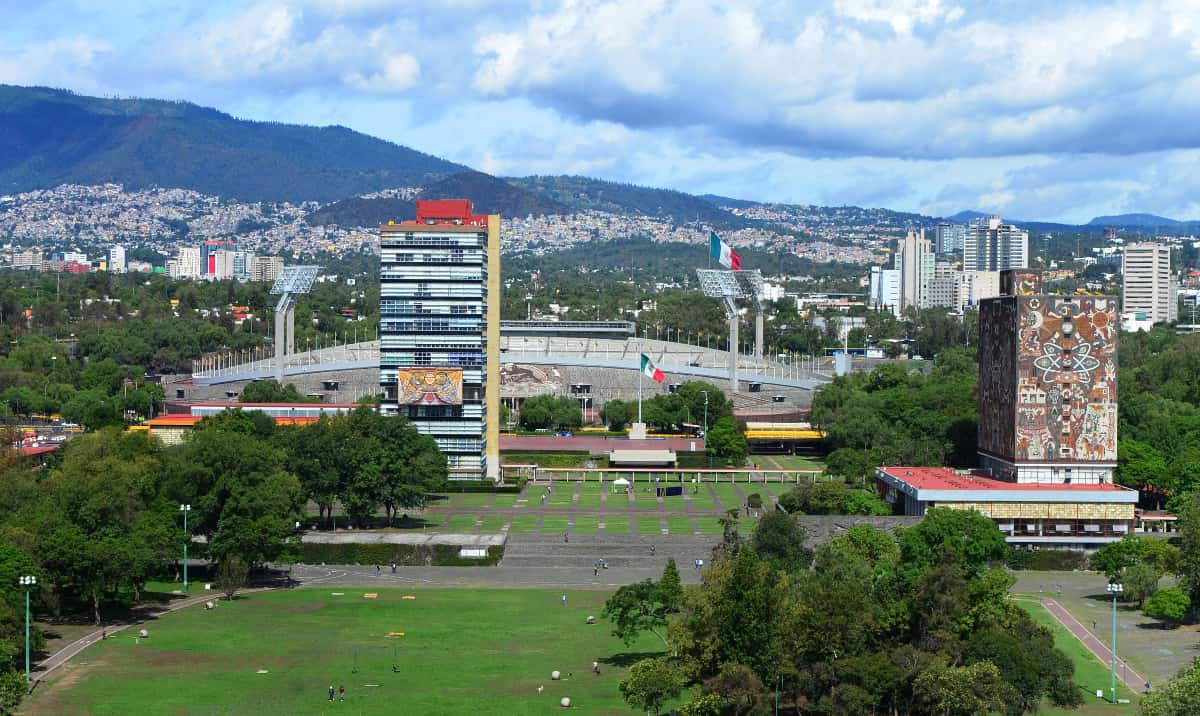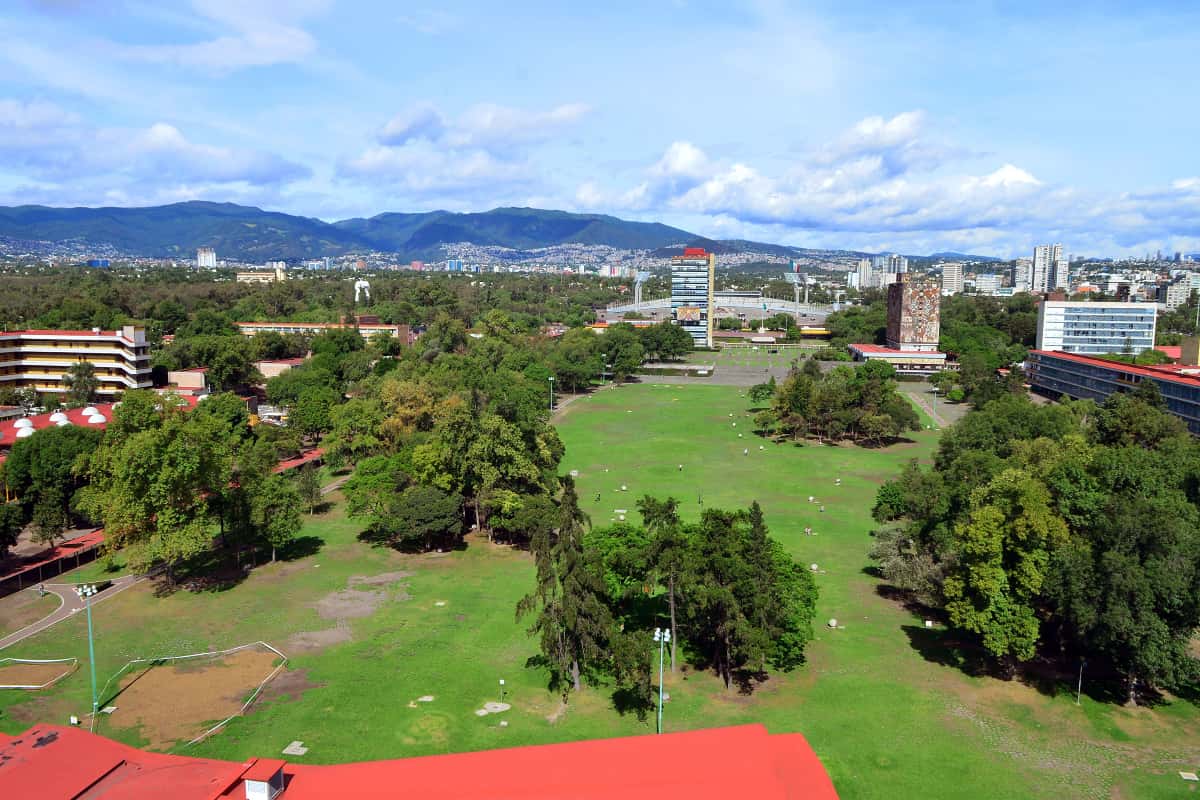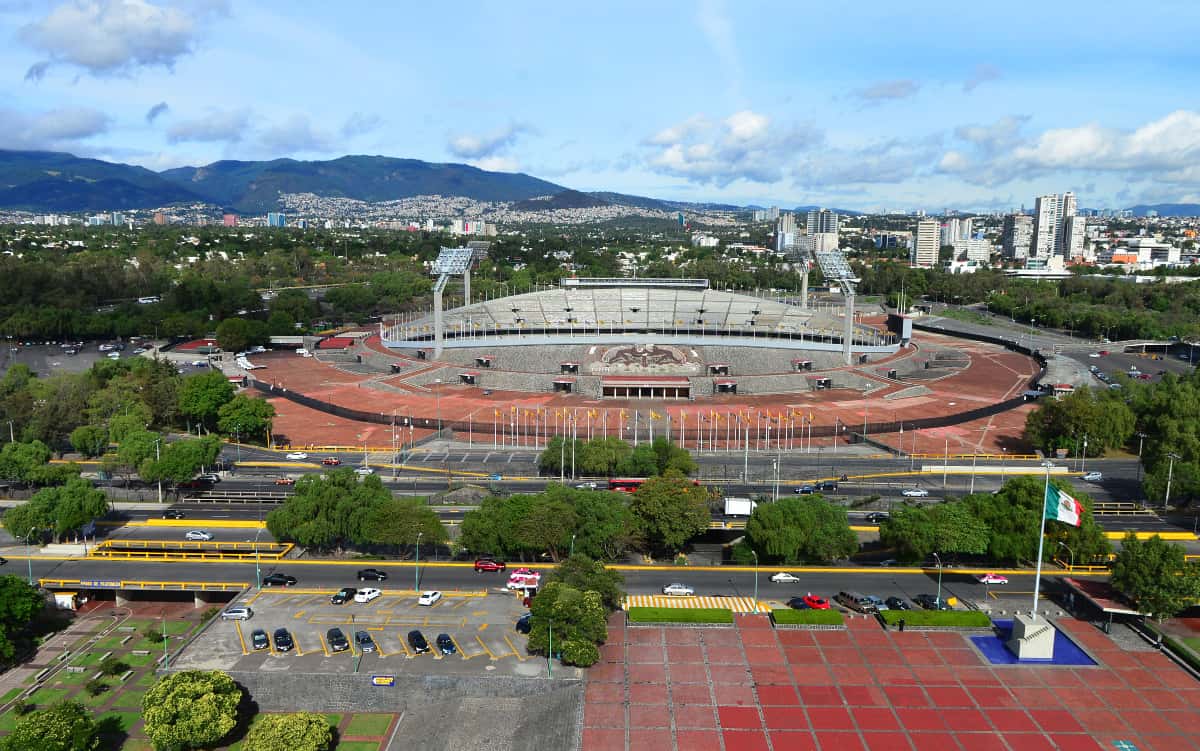The University City Central Campus, the Most Important Cultural Project in Mexico
In Mexico, there are only two monuments of the 20th century with this declaration: University City and the House-Museum of Luis Barragan. It is 15 years since it was included on the UNESCO World Heritage List.

The inscription of UNAM's University City central campus on the World Heritage List of the United Nations Educational, Scientific and Cultural Organization (UNESCO) is a recognition of Mexico's most important cultural project, of the nation's University, and also of the quality and grandeur of 20th-century modern Mexican architecture. The above, according to the director of the Faculty of Architecture, Juan Ignacio del Cueto Ruiz-Funes, who adds:
The creation of a campus for the UNAM in the vicinity of Pedregal de San Angel, south of Mexico City, represented the construction of a utopia of what was almost 70 years ago the most advanced in architectural and urban development issues, including pedagogical postures.
Three decades ago, on July 2, 2007, this space officially obtained declaration by the international organization, thanks to the fact that it managed to combine urban planning, landscaping, architecture, engineering, and fine arts in a single area for study, and whose title allows it to join the select group of universities in the world that carry this distinction.
According to the institution, the result was the creation of a monumental architectural ensemble exemplary of 20th-century modernism, which embodies social and cultural values of universal transcendence and has become one of the most important symbols of modernity in Latin America.
The category achieved includes the first university circuit inaugurated in 1952 and its more than 50 buildings within a core area of 176.5 hectares, representing 25 percent of the total 730 hectares of the university campus.
The limits of this area are the Olympic Stadium to the west; the Frontons and the Sports Zone to the south; the School of Medicine to the east; and the buildings of the Schools of Philosophy and Letters, Law, Economics, and Dentistry to the north.
Del Cueto Ruiz-Funes emphasizes that approximately 150 architects, 350 engineers, thousands of masons, and important sectors of the construction industry were involved in the construction of this great work. It was a real feat to have completed construction of such dimensions in two and a half years.
It should be noted that this university was the fifth university inscribed on UNESCO's list in this category and the second in the 20th century. It was preceded by the Central University of Venezuela, in Caracas, as well as the University of Virginia, United States, founded in the 19th century; the University of Alcalá de Henares, Spain, founded in 1499; and the University of Coimbra, Portugal, created in 1290, one of the oldest in Europe, whose architecture dates back centuries.
The expert refers to the importance of the landscape architecture that surrounds the central university campus, recognized by the international organization. "The buildings were arranged in such a way, even inspired by pre-Hispanic urbanism, and whose structures make up this large open space, around which are located different buildings in which various activities are carried out, but its users converge in a central space".

One of the virtues of this architectural work - in which visual artists such as David Alfaro Siqueiros, author of the monumental work that adorns the Rectory Tower, or Juan O'Gorman, architect of the Central Library and responsible for the creation of its murals, for example, also collaborated - is the unity provided by the landscape; the treatment of open spaces and pavements, as well as the vegetation, all of which together give it that unity within diversity.
Del Cueto Ruiz-Funes explains: that one of the important values of CU is that it was a collective work of what should be the creation of a new campus for a university as important as ours. "This conception in which so many heads participated is a choral production that brought together the talent, intelligence, and initiative of many heads that crystallized in an architectural idea that responded to the needs of its time."
However, as time went by, it became too small because the future growth projections were reached too quickly. It had been designed for a population of probably 40,000 inhabitants within Ciudad Universitaria; today there are close to 300,000 people entering and leaving the site daily.
The need to disseminate the relevance of this distinction to preserve the originality and maintain the integrity of this heritage and cultural concept, which has given our nation an important identity of its own. Although it is a construction based on the postulates of the world's modern movement, it has its characteristic in our country, through the plastic integration and the relationship with the landscape in which it is inserted.
The application of the general guidelines given to the teams of architects, where it was recommended, for example, the use of volcanic stone for foundations; working with reinforced concrete structures and large glazed surfaces; with glazed brick walls; the use of noble materials that do not require much maintenance has given it that survival that is still felt as modern architecture, in many cases, "much more modern than some buildings that the University itself did between 1970 and 1980", he points out.

We as academics, he says, are proud of this declaration. However, it is also important to understand that UNAM is more than University City in architectural terms and on other fronts. For example, since its relocation from the university neighborhood in downtown Mexico City, much of what is now the University has radiated from Pedregal de San Angel. For example, from here the National Schools of Higher Studies were created in other parts of the capital and other states of the country.
Everyone recognizes University City as the matrix from which these branches of the University have emerged, and we believe that this inscription on the World Heritage List is a true recognition of the greatest cultural institution at the international level, which is UNAM, in addition to the modern Mexican architecture of the 20th century," asserts Del Cueto Ruiz-Funes.
There were four criteria that UNESCO considered for this declaration: to represent a masterpiece of man's creative genius; to be the manifestation of a considerable exchange of influences during a certain period or specific cultural area in the development of architecture or technology, monumental arts, urban planning or country design.
"A third criterion has to do with the context in which it is inserted and, fourthly, it must be an outstanding example of a type of construction, an architectural, technological, or landscape ensemble that illustrates one or more significant stages in the history of mankind," he adds.
There are only two 20th-century monuments in Mexico that have been declared World Heritage Sites: the Luis Barragan House Museum and University City.
The work of the team, headed by architect Carlos Lazo, in charge of managing the project, and project directors Mario Pani and Enrique del Moral, stood out for its exemplary efficiency. Optimal use of resources, order, and unusual speed prevailed, allowing the work to be completed in less than three years.
Other celebrations
On November 20, 1952, the "Dedication of the University City" took place, a ceremony headed by then-President Miguel Aleman, which officially inaugurated the University City. The move of the schools began in 1953 and in March 1954 school activities began.
In 2022, seven decades of this event will be commemorated, in addition to the 15th anniversary of the inscription of University City as a Cultural Heritage of Humanity, and half a century of the 1972 World Heritage Convention, a UNESCO entity whose responsibility is to guarantee the conservation and enjoyment of these sites inscribed on the World Heritage List. To celebrate these anniversaries, various academic and cultural activities will be held from August to November of this year.




